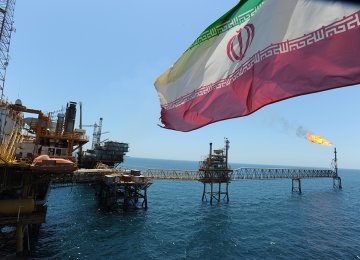The CEO of the Industrial Development and Renovation Organization (IDRO) of Iran outlined the energy roadmap for the next 10 years and said Tehran is seeking $180 billion in oil and gas investments over the next five years.
“The money will be used to develop the oil industry’s strategic projects, namely the joint West Karun oilfields, expand refineries and boost oil, gas and petrochemical production capacity,” Mansour Moazzami was quoted as saying by ILNA at the Offshore Northern Seas 2016 Conference in Stavanger, Norway.
The four-day convention ended on September 1.
Moazzami said based on Iran’s 20-Year Vision Plan (2005-2025), the country pursues four main objectives in the energy sector: becoming the largest petrochemical producer in the region, claiming 7% of global oil market, becoming the world’s third biggest producer of natural gas with 8%-10% of the global market share and emerging as a technology leader in the Middle East’s highly competitive oil and gas sector.
“Data shows that hydrocarbon resources will remain the primary source of energy until 2050, and by 2025, the five Persian Gulf states (Iran, Saudi Arabia, Kuwait, Iraq and the UAE) will be the world’s major oil producers with 65% of global crude reserves,” the official noted.
Gas Exports
Moazzami, who is also deputy minister of industry, mine and trade, stressed that Iran has plans to ramp up oil output to 4.75 million barrels a day from the present 3.8 million barrels.
Plans also call for boosting the production of gas condensates to 1 million bpd as well as raising gas output to 1.3 billion cubic meters a day by 2021.
Oil refining capacity is slated to reach 3 million barrels a day from the current 1.82 million and annual petrochemical output capacity is projected to reach 120 million tons from the present 60 million tons.
Iran has also set the goal of increasing gas exports by 200 mcm/d from the current 35 mcm/d to neighboring countries via pipeline and to other distant destinations in the form of LNG.
The official underlined that one of Iran’s new oil policies is to improve relations with countries that have state-of-the-art technology in oil extraction in order to adopt the knowhow and attract investment by sealing deals under the new contractual framework, aka Iran Petroleum Contracts.
Moazzami also reflected on the government’s economic achievements.
“Our economy has grown from a growth rate of minus 6% in 2012-13 to 4.4% in 2016,” Moazzami told the conferees in Norway.
Despite the big increase in the export of oil and condensates over the past three years, annual oil revenues have declined steeply from $69 billion a year to $33 billion as prices have plunged to less than half from their peak level in mid-2014.










